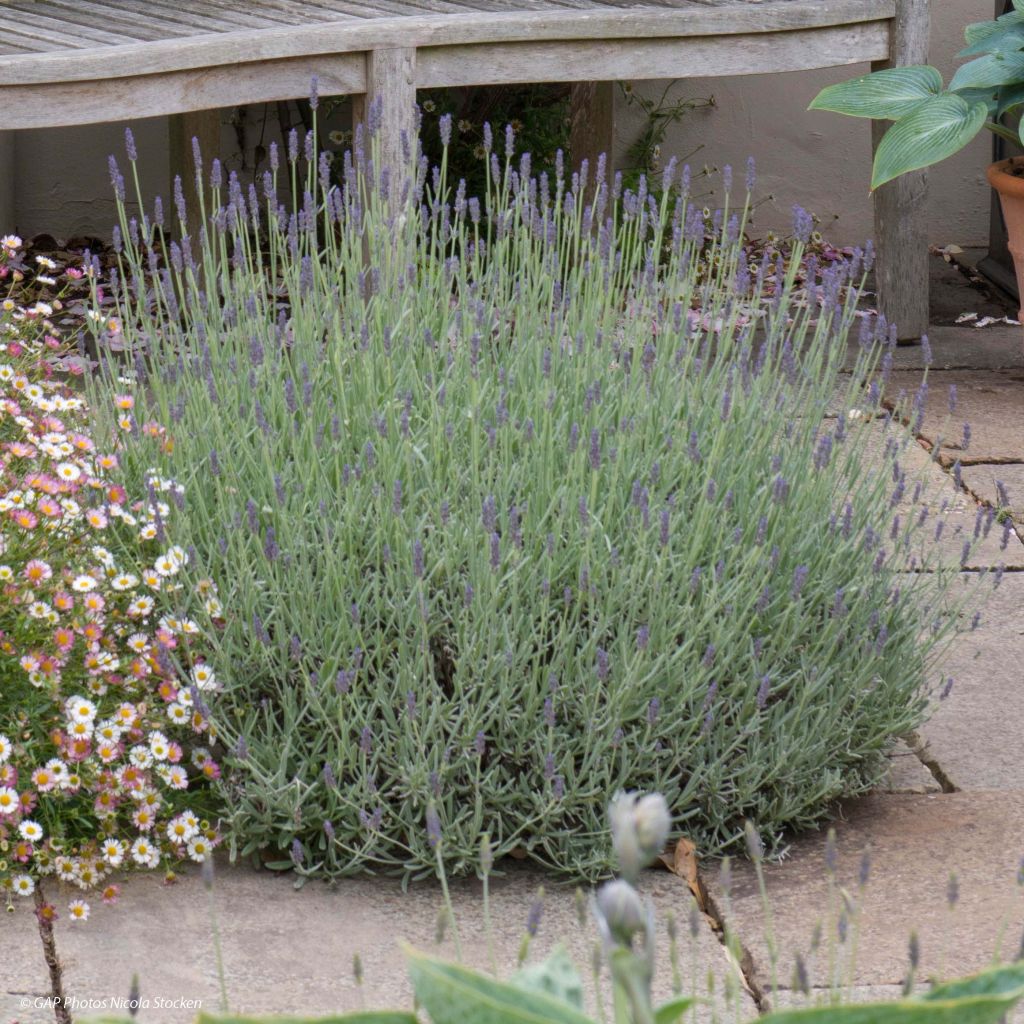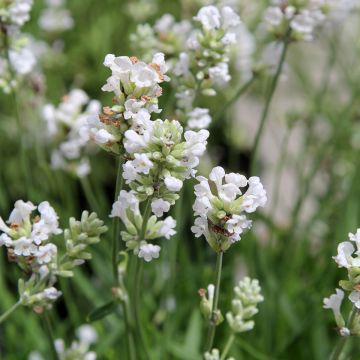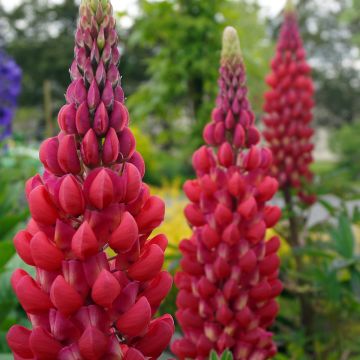

Lavandula x chaytorae Richard Gray - Hybrid Lavender


Lavandula x chaytorae Richard Gray - Hybrid Lavender
Lavandula x chaytorae Richard Gray - Hybrid Lavender
Lavandula x chaytorae Richard Gray
Hybrid Lavender
It started off well, producing flower stems that didn't bloom because it suddenly died!
MURIEL, 03/10/2025
Special offer!
Receive a €20 voucher for any order over €90 (excluding delivery costs, credit notes, and plastic-free options)!
1- Add your favorite plants to your cart.
2- Once you have reached €90, confirm your order (you can even choose the delivery date!).
3- As soon as your order is shipped, you will receive an email containing your voucher code, valid for 3 months (90 days).
Your voucher is unique and can only be used once, for any order with a minimum value of €20, excluding delivery costs.
Can be combined with other current offers, non-divisible and non-refundable.
Home or relay delivery (depending on size and destination)
Schedule delivery date,
and select date in basket
This plant carries a 12 months recovery warranty
More information
We guarantee the quality of our plants for a full growing cycle, and will replace at our expense any plant that fails to recover under normal climatic and planting conditions.
Would this plant suit my garden?
Set up your Plantfit profile →
Description
Lavandula x chaytorae 'Richard Gray' is one of the most compact hybrid lavenders but also one of the most beautiful in the garden. Forming a cushion that remains dense even at an advanced age, it ages much better than most varieties, while offering an interesting contrast in summer between its very light woolly foliage and spikes of a magnificent deep violet. It is an indispensable evergreen undershrub in dry or rocky, well-drained soils, in a very sunny exposure.
The genus Lavandula belongs to the Lamiaceae family. This hybrid is part of a series obtained in the mid-1980s at the Royal Botanic Gardens, Kew (England), easy to install in a dry garden, and tolerant of limestone. L. x chaytorae, also known as grey lavender, has inherited the robustness of fine lavender (L. angustifolia) and the wonderful silver foliage of woolly lavender (L. lanata). The variety 'Richard Gray' forms a nice round cushion with dense vegetation, reaching 40 to 50cm (16 to 20in) in flower, 20 to 30cm (8 to 12in) for the foliage, and a diameter of 40 to 50cm (16 to 20in). Its persistent leaves are narrow, particularly woolly and silver. They are even lighter when the soil is dry and the climate is warm. On the other hand, in cool climates, what the plant gains in foliage and robustness, it loses in colour and fragrance intensity. This variety has a summer flowering that lasts two months, from June to August, depending on the climate. Short and slender stems emerge above the foliage ball, bearing beautiful deep violet spikes, highly attractive to bees.
For us "northerners," lavender is synonymous with vacations. It evokes sunshine, the song of cicadas, the arid and fragrant hillsides of the Forcalquier region, and it is a piece of this atmosphere that we try to capture in our humid gardens. Lavenders have numerous and varied uses. In nature, these plants always live in poor, rocky, dry, perfectly drained environments, and experience the long, arid summers characteristic of the Mediterranean climate. It is only natural that they will find their place in rock gardens, alongside rockroses, creeping rosemary, sunroses, and Artemisias. Massifs can be created on large, well-drained slopes by planting different varieties of lavenders, whose volumes, flowering, and foliage will create a landscape with many undulations. Dry-loving perennials with vibrant or soft blooms can be mixed in to punctuate the landscape: Epilobium canum 'Western Hills', Salvia jamensis, Gaillardias, Hesperaloe parviflora with its red spikes, along with a Convolvulus althaeoides, a Provence bindweed that will run everywhere between and within the cushions without smothering them. A border of lavanders will look even prettier overlooking a wall, with aubrietas, for example, at their feet.
Report an error about the product description
Lavandula x chaytorae Richard Gray - Hybrid Lavender in pictures






Flowering
Foliage
Plant habit
Botanical data
Lavandula
x chaytorae
Richard Gray
Lamiaceae
Hybrid Lavender
Cultivar or hybrid
Other Lavendula - Lavender
View all →Planting and care
Plant Lavandula 'Richard Gray' in well-drained soil, even rocky. It is hardy down to -12/-15°C (10.4/5°F) in dry soil. In nature, lavenders always live in poor and dry environments. They dislike summer watering, which makes them sick and disappear, as they are very sensitive to fungal diseases induced by the combination of heat and humidity. In winter, they absolutely need perfect drainage, and in summer, they must be kept dry. Lavenders age better in poor soil, as their growth will be slower, and they are less likely to become bare at the base. This variety 'Richard Gray', unlike others, requires little pruning, except for removing faded flower spikes at the end of flowering. Lavenders never regrow on old wood. At planting, give them what they like: gravel, rocks, coarse sand, but no compost or fertilizer.
.
Planting period
Intended location
Care
-
, onOrder confirmed
Reply from on Promesse de fleurs
Similar products
Haven't found what you were looking for?
Hardiness is the lowest winter temperature a plant can endure without suffering serious damage or even dying. However, hardiness is affected by location (a sheltered area, such as a patio), protection (winter cover) and soil type (hardiness is improved by well-drained soil).

Photo Sharing Terms & Conditions
In order to encourage gardeners to interact and share their experiences, Promesse de fleurs offers various media enabling content to be uploaded onto its Site - in particular via the ‘Photo sharing’ module.
The User agrees to refrain from:
- Posting any content that is illegal, prejudicial, insulting, racist, inciteful to hatred, revisionist, contrary to public decency, that infringes on privacy or on the privacy rights of third parties, in particular the publicity rights of persons and goods, intellectual property rights, or the right to privacy.
- Submitting content on behalf of a third party;
- Impersonate the identity of a third party and/or publish any personal information about a third party;
In general, the User undertakes to refrain from any unethical behaviour.
All Content (in particular text, comments, files, images, photos, videos, creative works, etc.), which may be subject to property or intellectual property rights, image or other private rights, shall remain the property of the User, subject to the limited rights granted by the terms of the licence granted by Promesse de fleurs as stated below. Users are at liberty to publish or not to publish such Content on the Site, notably via the ‘Photo Sharing’ facility, and accept that this Content shall be made public and freely accessible, notably on the Internet.
Users further acknowledge, undertake to have ,and guarantee that they hold all necessary rights and permissions to publish such material on the Site, in particular with regard to the legislation in force pertaining to any privacy, property, intellectual property, image, or contractual rights, or rights of any other nature. By publishing such Content on the Site, Users acknowledge accepting full liability as publishers of the Content within the meaning of the law, and grant Promesse de fleurs, free of charge, an inclusive, worldwide licence for the said Content for the entire duration of its publication, including all reproduction, representation, up/downloading, displaying, performing, transmission, and storage rights.
Users also grant permission for their name to be linked to the Content and accept that this link may not always be made available.
By engaging in posting material, Users consent to their Content becoming automatically accessible on the Internet, in particular on other sites and/or blogs and/or web pages of the Promesse de fleurs site, including in particular social pages and the Promesse de fleurs catalogue.
Users may secure the removal of entrusted content free of charge by issuing a simple request via our contact form.
The flowering period indicated on our website applies to countries and regions located in USDA zone 8 (France, the United Kingdom, Ireland, the Netherlands, etc.)
It will vary according to where you live:
- In zones 9 to 10 (Italy, Spain, Greece, etc.), flowering will occur about 2 to 4 weeks earlier.
- In zones 6 to 7 (Germany, Poland, Slovenia, and lower mountainous regions), flowering will be delayed by 2 to 3 weeks.
- In zone 5 (Central Europe, Scandinavia), blooming will be delayed by 3 to 5 weeks.
In temperate climates, pruning of spring-flowering shrubs (forsythia, spireas, etc.) should be done just after flowering.
Pruning of summer-flowering shrubs (Indian Lilac, Perovskia, etc.) can be done in winter or spring.
In cold regions as well as with frost-sensitive plants, avoid pruning too early when severe frosts may still occur.
The planting period indicated on our website applies to countries and regions located in USDA zone 8 (France, United Kingdom, Ireland, Netherlands).
It will vary according to where you live:
- In Mediterranean zones (Marseille, Madrid, Milan, etc.), autumn and winter are the best planting periods.
- In continental zones (Strasbourg, Munich, Vienna, etc.), delay planting by 2 to 3 weeks in spring and bring it forward by 2 to 4 weeks in autumn.
- In mountainous regions (the Alps, Pyrenees, Carpathians, etc.), it is best to plant in late spring (May-June) or late summer (August-September).
The harvesting period indicated on our website applies to countries and regions in USDA zone 8 (France, England, Ireland, the Netherlands).
In colder areas (Scandinavia, Poland, Austria...) fruit and vegetable harvests are likely to be delayed by 3-4 weeks.
In warmer areas (Italy, Spain, Greece, etc.), harvesting will probably take place earlier, depending on weather conditions.
The sowing periods indicated on our website apply to countries and regions within USDA Zone 8 (France, UK, Ireland, Netherlands).
In colder areas (Scandinavia, Poland, Austria...), delay any outdoor sowing by 3-4 weeks, or sow under glass.
In warmer climes (Italy, Spain, Greece, etc.), bring outdoor sowing forward by a few weeks.



















































